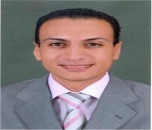Scientific Program
Keynote Session:
Title: Establishment Of Body Auto Fitting Model BAFM Using NJ-GPM At Toyota
Biography:
Dr. Sakai had received a bachelor’s degree in Electrical Engineering from Nagoya Institute of Technology in 1986 and joined Toyota Motor Corporation. He has been responsible for Research & Development and Application of Robots in Body Production Engineering Division, specifically Fully Automated Assembly Processes. He has a Doctoral Degree (PhD.) in Industrial Engineering from Meiji University in 2010. From 2016 to 2018 he was engaged in Vice President of Toyota Motor Manufacturing, Texas, Inc. From the beginning of 2022 he was sent on loan to the Kawasaki Heavy Industries LTD. for Robotics division
Abstract:
The Toyota Production System (TPS) exemplifies Japanese manufacturing. It has been further developed and spread in the form of internationally shared global production systems. The author has proposed the New Japan Global Production Model “NJ-GPM”, a system designed to achieve worldwide uniform quality and production at optimal locations – the keys to successful global production at Toyota. Based on NJ-GPM, the author has further established the Body Auto Fitting Model “BAFM”. The author has realized innovative unmanning of a fitting line by integrating the technologies utilizing BAFM. The ability to automatically fit and fasten door, hood and luggage compartment panels to the car body was achieved, utilizing robotics, vision systems, bolt tightening and product quality management. This paper shows the development of the highly reliable production system combining the following three items: (1) panel fitting accuracy, (2) automatic bolt tightening, and (3) integration into flexible assembly line at Toyota.
Title: Wireless Sensor Networks for Health-care sensor and medical internet of things
Biography:
Bilal AL-Hayani received the B.Sc. degree in Laser Engineering from university of Technology –Baghdad, Iraq in 1999 to 2004 , and the M.Sc. degree in electronics and telecommunication engineering and electromagnetic from University of Pune ,India from 2011 to 2013 he was joined in Ph.D . researcher in 2014 in Electronics and communication Department in Yildiz Technical University ,Istanbul, Turkey . His general research interests lie in signal processing and communication theory and signal coding on wireless communication and image processing specific research area include cooperative communication techniques He published a lot off original articles of papers research in Sci (science citation index expanded ) journals index and in scopus in SAGE and ASP publisher.
Abstract:
Aims & Scope: Please provide an overview of the Special Collection’s intended focus, detailing the aims of the Collection and what type of research is welcomed.
The wireless sensor network technologies are considered as one of the key research areas in computer science and healthcare application industries. The pervasive healthcare systems The Internet of Medical Things (MIoT) is an amalgamation of wearable medical devices and mobile applications that can connect to healthcare sensors information technology systems using networking technologies. (MIoT) The impact of IoT in healthcare, although still in its initial stages of development has been significant , attempts to review and understand the applications of MIoT in personalised healthcare will promote personalized care and higher standards of care and living through individual data-driven treatment regimens as well as optimized devices tailored to individual physiological requirements. The IoMT senses the patients’ health status and then transfers the medical data to doctors and healthcare providers with the help of remote cloud data centres. These data are used for disease diagnosis and in medical care decision-making. The main challenge in MIo is how to manage the large amount of medical data. Potential topics include but are not limited to:
- IoT measurement and control And new methodology of optical sensor network for detection
- High-level methods and tools for node and application design healthcare sensors
- The physical environment, both local and remote sensors.
- biomedical sensors network and and identification of biological and chemical agents
- image transmission using in healthcare sensors.
Title: Computational Intelligence for Knowledge Representation and Management
Biography:
Abdel-Badeeh M. Salem is a full Professor of Computer Science since1989 at Ain Shams University, Egypt. His research includes artificial intelligence, machine learning, biomedical informatics, big data analytics, intelligent education and learning systems, information mining, knowledge engineering and Biometrics. Founder of the Artificial Intelligence and Knowledge Engineering Research Labs, Ain Sham University, Egypt & Chairman of Working Group on Bio-Medical Informatics, ISfTeH, Belgium He has published around 750 papers (125 of them in Scopus indexing). He has been involved in more than 800 Int Confs and Workshops as; a keynote and plenary speaker, member of Program Committees , Workshop/ Session organizer , Session Chair and Tutorials In addition he was a member of many Int societies. In addition he is a member of the Editorial Board of 50 Int and national Journals. Also, He is member of many Int. Scientific Societies and associations, elected member of Euro Mediterranean Academy of Arts and Sciences, Greece. Member of Alma Mater Europaea of the European Academy of Sciences and Arts, Belgrade.
Abstract:
In the last years, various computational intelligence (CI) techniques and methodologies have been proposed by the researchers in order to develop efficient knowledge-based systems (KBS) for different tasks. These systems are based on the knowledge engineering paradigms and artificial intelligence paradigms, concepts and theories. Many types of KBS are in existence today and are applies to different domains and tasks, e.g., healthcare, business, commerce, law and education. This talk presents some of the CI techniques for managing and engineering knowledge in KBS. Some of the research results of the author and his colleagues that have been carried out in recent years are discussed as well.
Title: Photogrammetric study of thermal infrared by drone: interest for precision agriculture in Sahelian Africa
Biography:
He is a topographic surveyor engineer. I am currently doing my doctorate in remote sensing at the Centre de coopération internationale en recherche agronomique pour le développement. I also won the best poster award at the international conference on sustainable intensification in 2021.
Abstract:
Title: A Token-Based Voting System for Rating News Sources
Biography:
Sean Kim has worked under the advisement of Dr. Neel Tiruviluamala at University of Southern California Math department. Sean is passionate about computer science and hopes to conduct more research in the field.
Abstract:
Abstract—There is a stigma associated with newspaper companies that they tend to bend the truth and relay inaccurate information. Token-curated registries (TCR) are decentralized recommender systems designed to collect high-quality information. We have developed a prototype of a voting system based on the TCR system which rates news sources from a scale between 1 (lowest) and 10 (highest). Voters wager and are rewarded in the form of “Newscoin”, a cryptocurrency that voters possess. The performance is evaluated based on the deviation from the average rating wherein users who vote closer towards the average tend to gain profit while those who deviate from the average tend to incur loss. The system can be extended to multiple applications including financial portfolios, rating systems for healthcare, restaurants, and other industries.
Title: Incorporating Spatial Transcriptome Data into Ligand-Receptor Analyses to Discover Regional Activation in Cells
Biography:
Abstract:
Title: Text Mining for Automated Search and Exploration of COVID-19 Literature
Biography:
Will update Shortly....
Abstract:
Since Dec 2019, more than 50,000 scientific articles have been published on COVID-19. The exponential growth in the number of publications makes it difficult for clinicians, public health officials, biomedical researchers, and the general public to stay current with the latest findings. Text-mining tools are needed to facilitate rapid information extraction and summarization from experimental/clinical studies and answer high-priority questions. The main goal of this project is to use text-mining to extract and summarize the rapidly evolving information on risk factors, biomarkers, and drug targets in the COVID-19 scientific literature in PubMed abstracts. Co-occurrence based networks are used to summarize multiple articles and identify key biomedical terms (e.g. genes, cytokines, chemicals, mutations) that are related to the search query (e.g. COVID-19 delta variant). As a case study, we searched for top genes that are mentioned in the literature related to the query term: “(SARS-COV-2 or COVID-19) and diabetes” The top 5 genes included: angiotensin converting enzyme 2, cardiac troponin-1, plasmin, interleukin 6, and C-reactive protein. Automated summarization of biomedical text will enhance access to information and allow biomedical researchers and general public to find information related to risk factors of COVID-19 including pregnancy, smoking, and comorbidities and identify potential drug targets.
Title: Autonomous Robot Evolution
Biography:
Abstract:
This research will investigate the long-term vision of a technology enabling the evolution of entire autonomous robotic ecosystems that live and work for long periods in challenging and dynamic environments without the need for direct human oversight. Based on state-of-the-art 3D printing techniques with novel materials and a hybridised hardware-software evolutionary architecture - the research will address current weaknesses in robot design methodology by establishing self- reproducing robots that evolve their morphologies and controllers in real-time. Imagine an environment where autonomous systems (robots) are not designed by humans (or indeed designed at all) but are created through a series of steps that follow evolutionary processes. These robots will be “born” through the use of 3D manufacturing, with novel materials and a hybridised hardware-software evolutionary architecture. “Child” robots will learn in a safe and controlled environment where success will be rewarded. The most successful individuals will make available their genetic code for reproduction and for the improvement of future generations. Such a process will ultimately lead to a change in the way things are designed and manufactured. The long-term vision is a technology enabling the evolution of entire autonomous robotic ecosystems that live and work for long periods in challenging and dynamic environments without direct human oversight. This means radically new autonomous systems are needed, where robots are conceived and born, rather than designed and manufactured. Such robots will fundamentally change the concept of machines, showcasing a new breed that can change their form and behavior, not in error but on purpose.
Title: Artificial Intelligence Application for Photovoltaic Systems
Biography:
Hany M. Hasanien (M 09, SM 11) received his B.Sc., M.Sc. and Ph.D. degrees in Electrical Engineering from Ain Shams University, Faculty of Engineering, Cairo, Egypt, in 1999, 2004, and 2007, respectively. From 2008 to 2011, he was a Joint Researcher with Kitami Institute of Technology, Kitami, Japan. From 2012 to 2015, he was Associate Professor at College of Engineering, King Saud University, Riyadh, Saudi Arabia. Currently, he is Professor at the Electrical Power and Machines Department, Faculty of Engineering, Ain Shams University. His research interests include modern control techniques, power systems dynamics and control, energy storage systems, renewable energy systems, and smart grid. Prof. Hasanien is an Editorial Board Member of Electric Power Components and Systems Journal. He is Subject Editor of IET Renewable Power Generation, Frontiers in Energy Research and Electronics MDPI. He has authored, co-authored, and edited three books in the field of electric machines and renewable energy. He has published more than 200 papers in international journals and conferences. His biography has been included in Marquis Who’s Who in the world for its 28 edition, 2011. He was awarded the Encouraging Egypt Award for Engineering Sciences in 2012. He was awarded Institutions Egypt Award for Invention and Innovation of Renewable Energy Systems Development in 2014. He was awarded the Superiority Egypt Award for Engineering Sciences in 2019. Currently, he is IEEE PES Egypt Chapter Chair and is Editor in Chief of Ain Shams Engineering Journal.
Abstract:
Photovoltaic (PV) systems represents the second item of the renewable energy installation after the wind systems. Several investments are oriented to the PV industry where there is a deep reduction of components cost. This lecture presents the application of metaheuristic algorithms used to estimate the unknown parameters of the three-diode PV model of such PV panels. The principal goal of the study is to achieve an accurate PV model that can be applied to different systems. The accuracy of the PV model affects the accuracy of dynamic analyses of the system. The PV modeling is considered as an optimization problem, which represents the root mean squared current error between the calculated model current and the experimental current of the PV panel. Different metaheuristic algorithms can be applied to solve the optimization problem and obtain the unknown parameters of the PV model. The effectiveness of the proposed PV model is validated by several numerical results, which are carried out under different environmental conditions. The simulation results are compared with the experimental results for different PV panels. With the incorporation of metaheuristic algorithms, an accurate PV model of any PV panel is built. The application of these algorithms and artificial intelligence is very powerful in this research area.
Title: Mobility Management in Mobile Networks
Biography:
Ibraheem Shayea is faculty of Electronic and Electronics Engineering of Electronics & Communications Engineering Department of Istanbul Technical University.
Abstract:
Ensuring a seamless connection during the mobility of various User Equipment (UEs) will be one of the major challenges facing the practical implementation of the Fifth Generation (5G) networks and beyond. Several key determinants will significantly contribute to numerous mobility challenges. One of the most important determinants is the use of millimeter waves (mm-waves) as it is characterized by high path loss. The inclusion of various types of small coverage Base Stations (BSs), such as Picocell, Femtocell and drone-based BSs is another challenge. Other issues include the use of Dual Connectivity (DC), Carrier Aggregation (CA), the massive growth of mobiles connections, network diversity, the emergence of connected drones (as BS or UE), ultra-dense network, inefficient optimization processes, central optimization operations, partial optimization, complex relation in optimization operations, and the use of inefficient handover decision algorithms. The relationship between these processes and diverse wireless technologies can cause growing concerns in relation to handover associated with mobility. The risk becomes critical with high mobility speed scenarios. Therefore, mobility issues and their determinants must be efficiently addressed. This paper aims to provide an overview of mobility management in 5G networks. The work examines key factors that will significantly contribute to the increase of mobility issues. Furthermore, the innovative, advanced, efficient, and smart handover techniques that have been introduced in 5G networks are discussed. The study also highlights the main challenges facing UEs' mobility as well as future research directions on mobility management in 5G networks and beyond.
Title: A Multi-modal Approach for Crop Health Mapping using low altitude Remote Sensing, Internet of Things (IoT) and Machine Learning
Biography:
Dr. Rafia Mumtaz received her Ph.D. degree from the University of Surrey, the UK in 2010. She was awarded a Scholarship for her Ph.D. Studies abroad by the National University of Sciences and Technology (NUST) from 2006 to 2010. She was awarded the Endowment Fund Scholarship for her MS studies, by NUST from 2004 to 2006. She joined NUST-School of Electrical Engineering and Computer Science (SEECS) in 2010 and currently serving as Tenured Associate Professor and the director of the Internet of Things (IoT) lab at NUST-SEECS. She served as Head of the Information Technology department from Feb 2018 to Feb 2021.
She has a commendable research record and was conferred the Best Researcher Award, 2018 by Rector NUST on 3rd December 2019. In addition, she has been awarded the Women of Wonder award by inspiremill and WoWpk for her tremendous contributions in the field of precision agriculture. Her name has been included in the directory of Productive Scientist of Pakistan by Pakistan Council for Science and Technology (PCST), 2017. She has been elevated to Senior IEEE member for her meritorious services in the field of engineering in 2017.
She has published high-quality research papers in reputed ISI indexed and impact factor journals throughout her research career, which demonstrates her excellent research aptitude and potential for future research in the areas of expertise. She has secured several competitive and prestigious national and international research grants as a principal investigator and trained various students as part of her received funding, which is a key for the sustainability of education programs in a developing country like Pakistan. Until now she has secured around PKR 43million of research grants from several national and international funding bodies. She has been awarded 2 x research patents by the Intellectual Property Right office (IPO), Pakistan.
She went beyond her national networking circle and collaborated with top research groups in leading institutes like the University of Leeds, UK, University of Glasgow, UK, Queen Mary University of London, UK, University of Malaga, Spain, Technical University of Kaiserslautern, Germany, and German center for Research of Artificial Intelligence (DFKI), Germany.
Her key research initiative includes the establishment of the Internet of Things (IoT), the lab at NUST-SEECS in 2018. Considering her contributions and accomplishments her trajectory and contributions are at par with academicians in top universities worldwide and are considered exceptional compared to her peers.
Abstract:
The agriculture sector holds paramount importance in Pakistan due to the agrarian 2 nature of the economy. Pakistan has its GDP based on agriculture, however, it relies on the manual monitoring of crops, which is a labor-intensive and ineffective method. In contrast to this, several cutting-edge technology-based solutions are used in developed countries to enhance crop yield with optimal resources. Pakistani industry, while slow to initially respond to AI and IoT culture, has recently exhibited a great potential to adapt and apply these technologies for solving local challenges. To this end, we have proposed an integrated approach for monitoring crop health using IoT, machine learning, and drone technology, where the IoT sensors provide real-time status of environmental parameters impacting the crop, and the drone platform provides the multi-spectral data used for generating Vegetation Indices (VIs) such as Normalized Difference vegetation Index (NDVI) for analyzing crop health. The NDVI provides the health status of the crop based on the chlorophyll content which offers limited information regarding the crop health. In order to obtain detailed crop information, health maps are generated by combining IoT and multi-spectral data. For this purpose, multi-modal data is collected in different development stages of the crop and labeled to perform pixel-wise classification. A number of machine and deep learning algorithms are applied to the collected data where a deep neural network with two hidden layers exhibited the highest accuracy (98.4%) relative to all other models. Further, IoT sensors data maps were generated which helped to correlate the real-time meteorological conditions with the affected areas delineated in the crop health maps. The benefit of the proposed approach is that it would minimize the crop ground survey by providing detailed and near real-time crop health information in the form of crop health maps.
Title: Human centered collaboration and cooperation with robots in the field of automobile manufacturing sites
Biography:
Kazutsugu Suita received the B.S. Degree from Osaka Prefecture University, Osaka, Japan, in 1989, the M.S. degree from Toyota Technological Institute, Nagoya, Japan, in 1995, and the Ph.D. in Eng. degree from the University of Tsukuba, Tsukuba, Japan, in 2021. As a business activity, joined Toyota Motor Corporation in 1989, Toyota, Japan, where achieved on development of a special robot system and installation for body assembly manufacturing sites, vehicle quality inspection process engineering, and end of test line development and installation. Currently focusing on the development of industrial robot systems for human-centered manufacturing. ISO/TC299/WG3 (Industrial Robot) expert and Japan domestic committee member.
Abstract:
Cobots have come to be used in many manufacturing fields. On the other hand, there are many issues of risk countermeasures due to being caught in work-pieces and jigs, and research and development as a means of ensuring more practical safety and security and helping each other in the future are desired. In this report, we will provide topics on examples of collaborative use of automobile manufacturing sites and evaluate the physical burden on people using cyber-physical systems. We will discuss future issues and prospects for people-centered collaboration and collaboration and proposed “RICH” Real-time Inter Collaborated Harmonization concept.
Title: YASKAWA's Next Generation Robot System Concept and Application of AI Technology
Biography:
He joined Yaskawa Electric Corporation in 2012 after completing a master's degree in computer science at Kyushu Institute of Technology. In the same year, assigned to the R&D Dept, where he was engaged in the technological development of intelligent robots using computer vision. From 2020, he has moved to Robot Technology Dept. Currently, he is mainly in charge of the architectural design of next-generation robot controllers.
Abstract:
Conventional robot systems are used to make large quantities of products with the same standardized models and specifications. As machines that repeat predetermined movements at high speed and high precision, they have contributed to the automation of the manufacturing industry. However, with recent changes in consumer trends such as shorter product life cycles and customization, more flexible and intelligent robot systems are required. Yaskawa Electric Corporation advocates i3-Mechatronics as a solution concept for such next-generation robot systems. i3-Mechatronics proceeds in three "i" steps. (1) Integrated, (2) Intelligent, and (3) Innovative. Specifically, (1) integrate and manage information around the robot system, such as real and simulated data, then use the collected data for AI learning and analysis, and (2) make full use of the data in an intelligent manner. By doing so, we believe that we can (3) realize innovations such as robot system stabilization and intelligence, and as a result, solve management issues for the realization of next-generation robot systems that our customers require. We would like to offer our customers the i3-Mechatronics concept together with an open framework. This is because we believe that close collaboration on the software side with our customers' software assets and ecosystems is
crucial to making robots intelligent. From this perspective, we are developing a next-generation robot controller with a Linux module with
a GPU that can run an AI reasoner and an API that can access various types of information from robot controllers and simulators. In this
presentation, we will show examples of AI applications based on the i3-Mechatronics concept and the next-generation robot controller concept under development.














